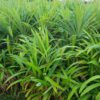No products in the cart.

Firstly, introducing Auscrops, a wonderful market vending company bridging farmers and customers together through market vendors. Click here to find out more about Chervil as well fruit and vegetable offers.
Chervil – Nutrition & Uses
Chervil (Anthriscus cerefolium) is an aromatic herb that has been used since ancient times. It has a light, mild flavor that resembles a combination of parsley, tarragon and anise. This herb used in many different dishes to add a unique flavor profile. Let’s take a closer look to learn more about its nutritional benefits, uses and storage tips.
Nutrition Facts
Chervil is low in calories and contains high amounts of vitamin C, calcium, iron and beta-carotene. It also contains small amounts of thiamin, riboflavin, niacin, magnesium and phosphorus as well as dietary fiber.
Uses
Used in soups, salads, omelets, sauces or as garnishes for various dishes. It adds a distinct flavor to fish dishes or it can be combined with other herbs such as tarragon to create an herbal blend perfect for any dish. The leaves of the chervil plant dried or frozen for later use.
Storage Tips
The best way to store fresh is to keep it in the refrigerator wrapped tightly in plastic wrap or in an airtight container. When storing dried chervil leaves it’s important to place them in an airtight container away from direct sunlight and heat sources to prevent the herbs from losing their flavor and aroma. Frozen chervil should place into sealed freezer bags before placed into the freezer.
Conclusion on Chervil
An aromatic herb with a unique flavor profile that is perfect for adding some extra zest to your favorite recipes! Not only does this herb provide great taste but it also provides many nutritional benefits including high levels of vitamins C and A as well as calcium and iron. With proper storage methods you can enjoy fresh chervil all year long!
Click here to read similar articles.
 Français
Français 










